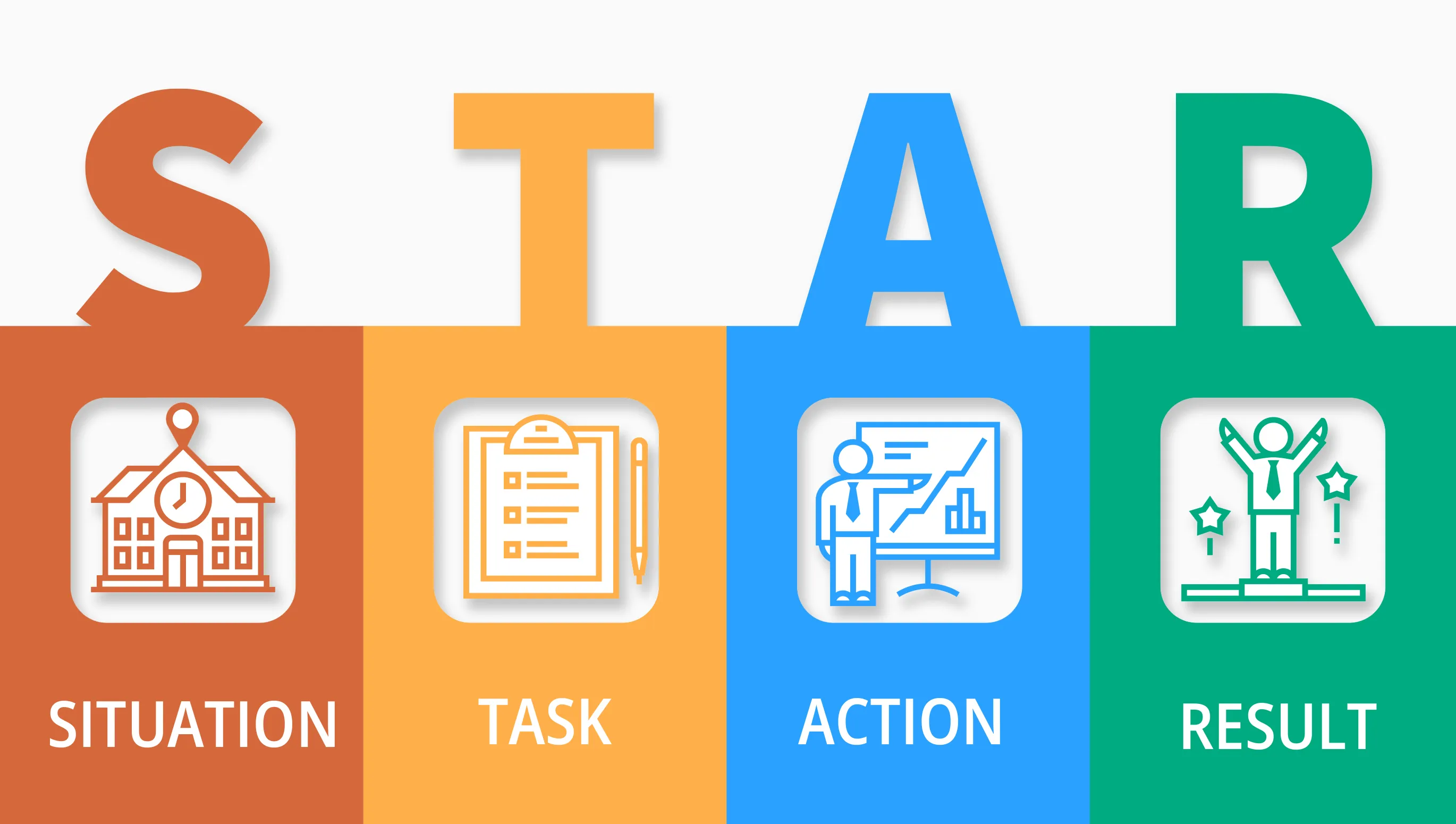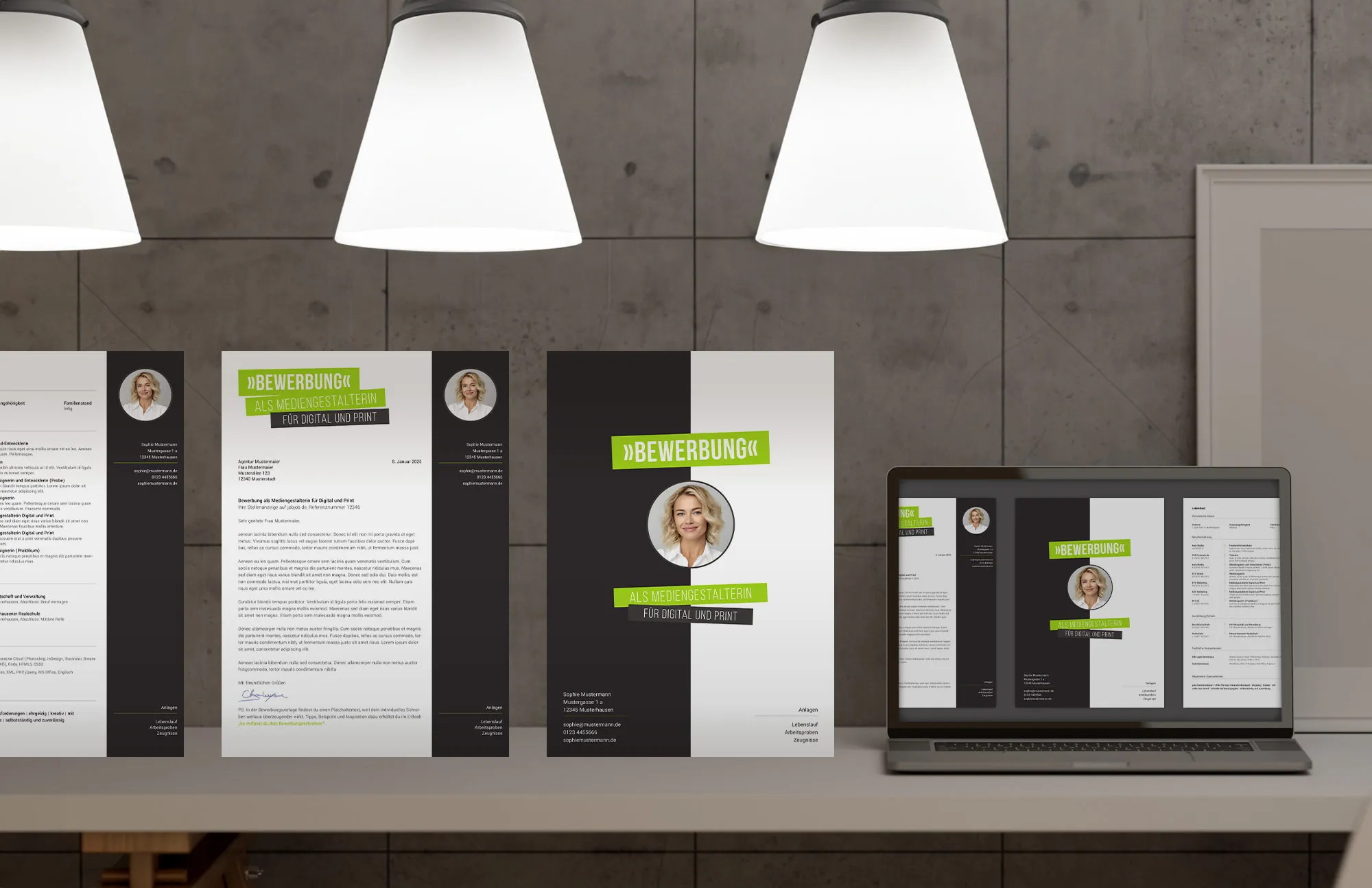STAR Method: How to use it in a job interview
Have you heard of the STAR method before? It could help you shorten your job search. Are you good at storytelling or do you tend to forget important details and digress? What if the stress of a job interview is added to the mix? Can you still give a clear, well-structured answer to questions like "Tell me about a time when..."?

For most of us, this is difficult. But the good news is: With the STAR method, you can give much more compelling answers to such questions.
What is the STAR method?
The STAR method helps provide structured and concise answers to behavioral questions in job interviews. STAR comes from English and stands for Situation, Task, Action, and Result. With this method, you can clearly demonstrate how you acted in certain situations and which skills you employed.
STAR stands for:
- Situation
- Task
- Action
- Result
The Situation describes the context of an event or challenge. Sufficient details should be provided here for the interviewer to grasp the setting. The Task refers to the specific task one had to handle in that situation.
In the Action section, the concrete steps taken are described. This part shows what actions were taken and why those steps were chosen. Finally, the Result section presents the outcome of one's actions. The impacts of the actions should be explained, and measurable results, if possible, should be provided.
Through the STAR method, you can approach the core points of an experience in a structured and focused manner, which helps the interviewer better understand your competencies.
How do you use the STAR method in a job interview?
To apply the STAR method in a job interview, you need preparation and some practice. You should prepare for questions based on past experiences, such as "Tell me about a time when...". It is helpful to identify various situations from your professional past in advance.
When describing the Situation, remain concise and clearly present the context of the story. This could be a specific challenge or project. Your focus should be on relevant details.
In the Task section, describe the specific task or responsibility you had in that situation. Here, you make clear what the goal was and what role you played.
The Actions you took are the core of the story. Here, you explain in detail the steps you took and why. This part shows how you solve problems and make decisions.
In the Result section, highlight the outcome of the actions. This could be a successfully completed project or an improvement in processes. Quantifiable results are particularly convincing.
By following the structured approach of the STAR method, you can ensure that the answers are clear and compelling, increasing your chances of a successful application.

Examples of Application
For a vivid overview, I have compiled two examples of questions and answers that illustrate the application of the STAR method. These examples show how you can provide structured and concise answers to behavioral questions in job interviews. By systematically going through the steps - Situation, Task, Action, and Result - you can clearly demonstrate how you acted in certain situations and which skills you employed. Here are the two examples:
Example 1: Teamwork
Question: Tell me about a time when you had to tackle a difficult task in a team.
Answer:
- Situation: In my previous job as a project manager, we faced the challenge of implementing a crucial software update within a tight timeframe. The team consisted of developers, designers, and marketing specialists.
- Task: My task was to coordinate the team, ensure that everyone completed their tasks on time, and optimize communication among departments.
- Action: I organized daily stand-up meetings to monitor progress and resolve issues quickly. Additionally, I implemented a project management tool to track all tasks and deadlines. I ensured that all team members transparently shared their progress and obstacles.
- Result: Due to improved communication and coordination, we successfully implemented the update on time. The project was completed within the timeframe without major issues, leading to positive feedback from customers and a 20% increase in user satisfaction.
Example 2: Conflict Resolution
Question: Tell me about a time when you had to resolve a conflict in the workplace.
Answer:
- Situation: In my previous job as a department manager, there was a conflict between two team members who disagreed on how to approach a specific customer project. The tensions started to impact the team's productivity.
- Task: My task was to resolve the conflict and ensure that the project could progress without compromising the team dynamics.
- Action: I organized a mediation meeting where both parties could present their viewpoints. I listened to both sides and helped them understand each other's perspectives. Afterwards, we collaboratively developed a compromise plan that incorporated elements from both proposals.
- Result: The conflict was resolved, and the team members were able to work together constructively again. The project was successfully completed, and the team dynamics significantly improved. Team satisfaction and collaboration notably increased, leading to better results in future projects as well.
These examples demonstrate how to apply the STAR method to provide precise and structured answers to behavioral questions in interviews.
How do you prepare with the STAR method for an interview?
How do you prepare to use the STAR method before an interview? It is helpful to think in advance about the stories you can tell and how you want to structure them. These tips will assist you:
- Review the job description. The job listing you applied to contains valuable information about what the employer expects from a candidate. Consider which qualities and skills are most important for this role and select stories that highlight these. For example, if you're applying for a customer service position, you need a story about providing excellent customer service.
- Select some strong and versatile examples. The STAR method won't help if you use it to structure a response to an irrelevant anecdote. You can't know in advance what specific questions the interviewer will ask, but you can prepare multiple stories about different types of experiences that can be adapted to different questions. Interviewers often ask about experiences of overcoming challenges or teamwork.
- Note down the key details. It's okay to go into the interview with some notes or cue cards. Write down some key points for each story and concrete numbers, if possible.
- Practice telling the stories. While the STAR method is great, you need to ensure your presentation is concise. Therefore, practice your responses in a mock interview or in front of a mirror to sound natural and confident when you're in the actual interview later.
- Take your time. If you're struggling to come up with a relevant example during the interview, it's okay to take a few seconds. Often, it impresses when a candidate requests a moment to think about the response.

10 common interview questions where this tactic can be applied
- Tell me about a time when you had to make a difficult decision.
- Describe a situation where you had to work under high pressure.
- Tell me about a project where you worked in a team.
- Talk about a task where you had to meet an important deadline.
- Describe a situation where you creatively solved a problem.
- Tell me about a time when you had to work with a difficult colleague.
- Talk about a situation where you took on a leadership role.
- Tell me about a project where you made a mistake and how you dealt with it.
- Describe a situation where you had to demonstrate your communication skills.
- Tell me about a time when you achieved a goal you are proud of.
How to start questions that you can answer with the STAR method?
- Tell me about a time when…
- Describe a situation in which…
- Report an example of when…
- Tell me about an experience when…
- Give an example of how you…
- How did you handle a situation where…
- What did you do when…
- Can you tell me about a challenge you…
- How did you deal with…?
- What was your role in a project where…

We hope this article was helpful for you and provided valuable insights into the application of the STAR method in job interviews. To further prepare you for your next job interview, we have two more informative articles that can assist you.
In the article Interview Questions: Best Preparation for a Job Interview you will find a comprehensive list of frequently asked questions and helpful tips on how to answer them. From classic questions like "Tell me about yourself" to tricky behavioral questions, this article provides everything you need to confidently and well-prepared for your next job interview.
The second article Strengths and Weaknesses in a Job Interview addresses another central topic in the job application process. Here you will learn how to effectively highlight your strengths and honestly present your weaknesses in a positive manner. With practical examples and wording assistance, you will be shown how to present yourself optimally without sounding arrogant or insecure.
Both articles complement this guide perfectly and provide you with additional tools and strategies to shine in a job interview. Read through them and use the knowledge to maximize your chances of landing your dream job. Good luck on your next job interview!
From Vitalii Shynakov
